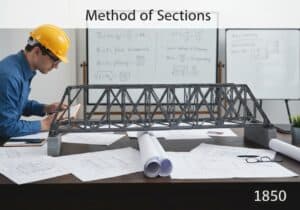The alpha-helix ([latex]\alpha[/latex]-helix) is a common secondary structure motif in proteins. It is a right-handed coiled conformation in which every backbone N-H group donates a hydrogen bond to the backbone C=O group of the amino acid located four residues earlier ([latex]i+4 \rightarrow i[/latex] hydrogen bonding). This regular pattern pulls the polypeptide chain into a helical shape.
The Alpha-Helix (biochemistry)
- Linus Pauling
- Robert Corey
- Herman Branson
Linus Pauling and his colleagues predicted the existence of the alpha-helix in 1951 before it was experimentally observed in detail by Max Perutz in the structure of myoglobin. Their prediction was based on a deep understanding of the planar nature of the peptide bond and the principles of hydrogen bonding. They meticulously built physical models to find stable conformations of a polypeptide chain that maximized hydrogen bonding while respecting steric constraints.
The alpha-helix has specific geometric properties: 3.6 residues per turn, a pitch of 5.4 Å (0.54 nm), and backbone dihedral angles ([latex]\phi, \psi[/latex]) typically around (-60°, -45°). The side chains of the amino acids extend outwards from the helical axis, allowing them to interact with the environment or other parts of the protein. Certain amino acids, like alanine, leucine, and methionine, are considered ‘helix formers,’ while others, like proline (which lacks a backbone N-H for hydrogen bonding and has a rigid ring) and glycine (which is too flexible), are ‘helix breakers.’ The discovery of the alpha-helix and the beta-sheet provided the first fundamental insights into how a simple linear chain of amino acids could fold into complex, stable, and functional three-dimensional structures.
Typ
Unterbrechung
Verwendung
Vorläufersubstanzen
- x-ray diffraction studies of fibrous proteins like keratin by william astbury
- understanding of the planar geometry of the peptide bond
- elucidation of the principles of hydrogen bonding by linus pauling
- development of physical molecular models
Anwendungen
- understanding the structure of fibrous proteins like keratin in hair and skin
- designing alpha-helical peptides for antimicrobial or anti-cancer therapies
- modeling transmembrane domains of proteins, which are often alpha-helical
- protein structure prediction and Validierung
- rational drug design targeting alpha-helical protein-protein interaction interfaces
Patente:
Mögliche Innovationsideen
!Professionals (100% free) Mitgliedschaft erforderlich
Sie müssen ein Professionals (100% free) Mitglied sein, um auf diesen Inhalt zugreifen zu können.
VERFÜGBAR FÜR NEUE HERAUSFORDERUNGEN
Maschinenbauingenieur, Projekt-, Verfahrenstechnik- oder F&E-Manager
Kurzfristig für eine neue Herausforderung verfügbar.
Kontaktieren Sie mich auf LinkedIn
Integration von Kunststoff-Metall-Elektronik, Design-to-Cost, GMP, Ergonomie, Geräte und Verbrauchsmaterialien in mittleren bis hohen Stückzahlen, Lean Manufacturing, regulierte Branchen, CE und FDA, CAD, Solidworks, Lean Sigma Black Belt, medizinische ISO 13485
Wir suchen einen neuen Sponsor
Ihr Unternehmen oder Ihre Institution beschäftigt sich mit Technik, Wissenschaft oder Forschung?
> Senden Sie uns eine Nachricht <
Erhalten Sie alle neuen Artikel
Kostenlos, kein Spam, E-Mail wird nicht verteilt oder weiterverkauft
oder Sie können eine kostenlose Vollmitgliedschaft erwerben, um auf alle eingeschränkten Inhalte zuzugreifen >Hier<
Verwandte Erfindungen, Innovationen und technische Prinzipien













